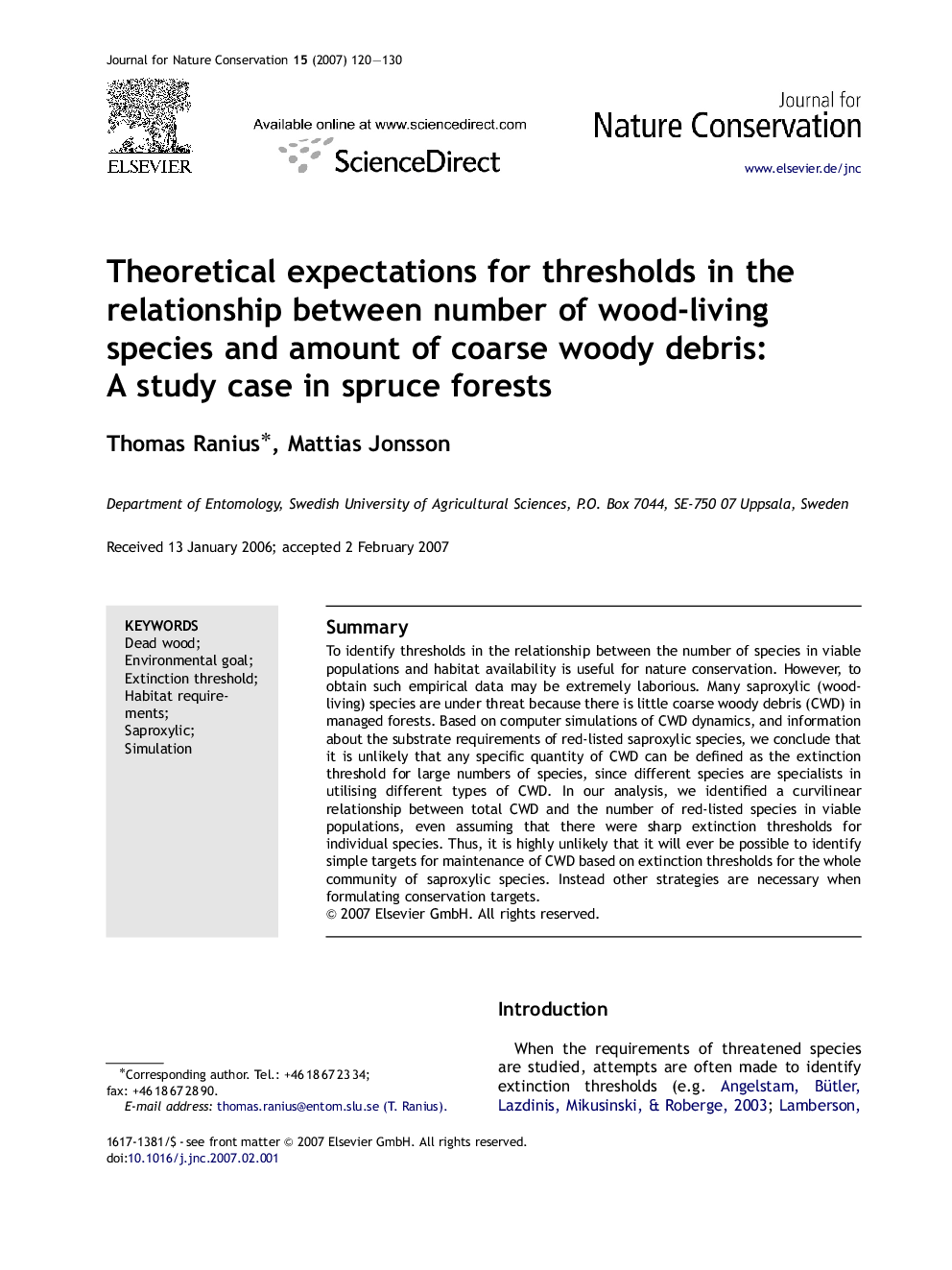| Article ID | Journal | Published Year | Pages | File Type |
|---|---|---|---|---|
| 4400120 | Journal for Nature Conservation | 2007 | 11 Pages |
SummaryTo identify thresholds in the relationship between the number of species in viable populations and habitat availability is useful for nature conservation. However, to obtain such empirical data may be extremely laborious. Many saproxylic (wood-living) species are under threat because there is little coarse woody debris (CWD) in managed forests. Based on computer simulations of CWD dynamics, and information about the substrate requirements of red-listed saproxylic species, we conclude that it is unlikely that any specific quantity of CWD can be defined as the extinction threshold for large numbers of species, since different species are specialists in utilising different types of CWD. In our analysis, we identified a curvilinear relationship between total CWD and the number of red-listed species in viable populations, even assuming that there were sharp extinction thresholds for individual species. Thus, it is highly unlikely that it will ever be possible to identify simple targets for maintenance of CWD based on extinction thresholds for the whole community of saproxylic species. Instead other strategies are necessary when formulating conservation targets.
